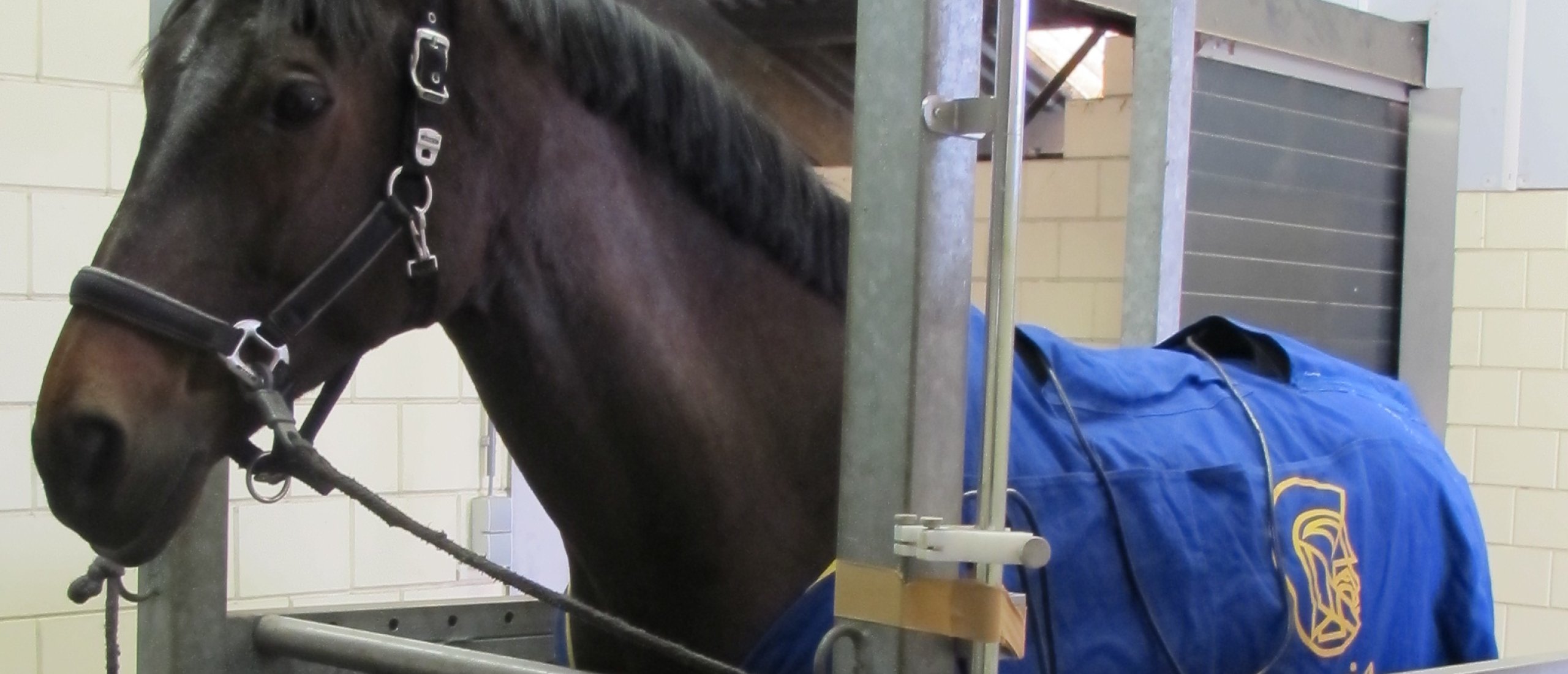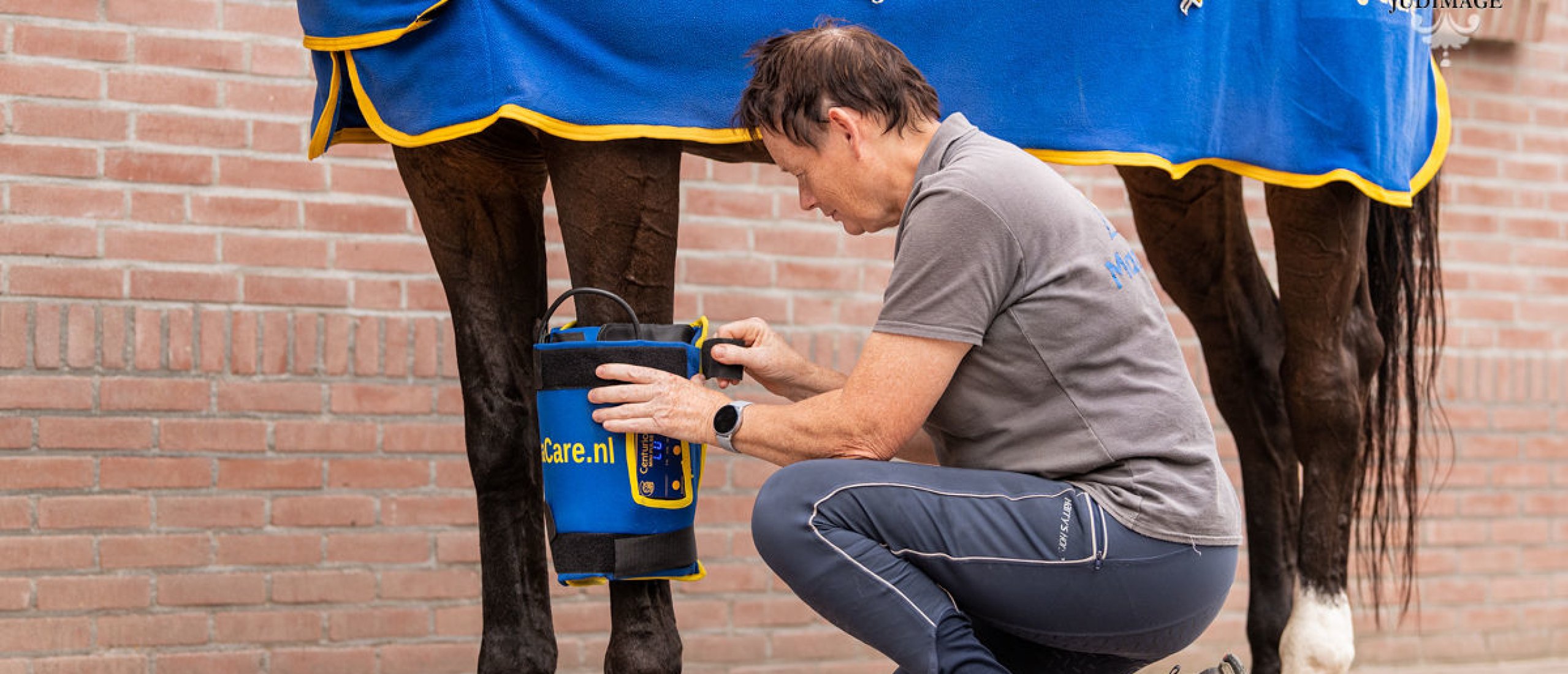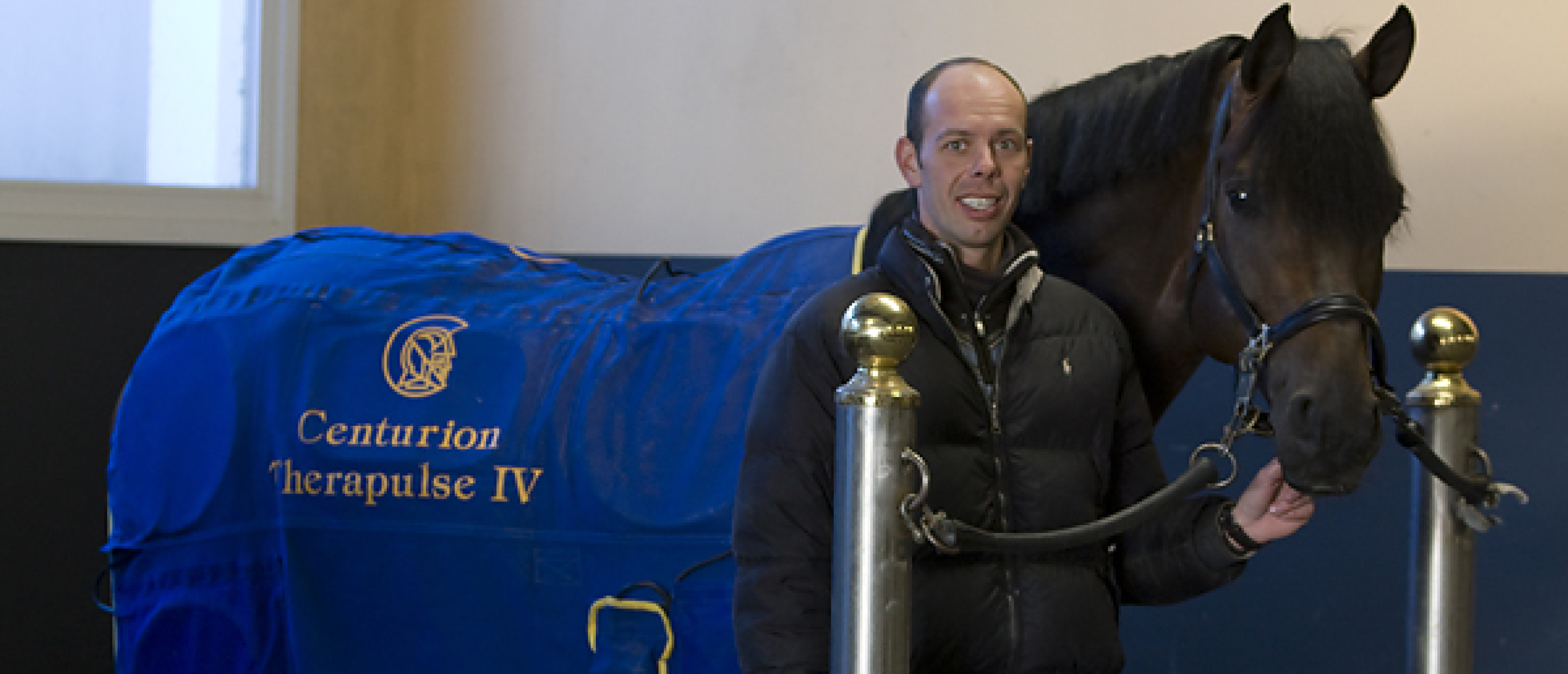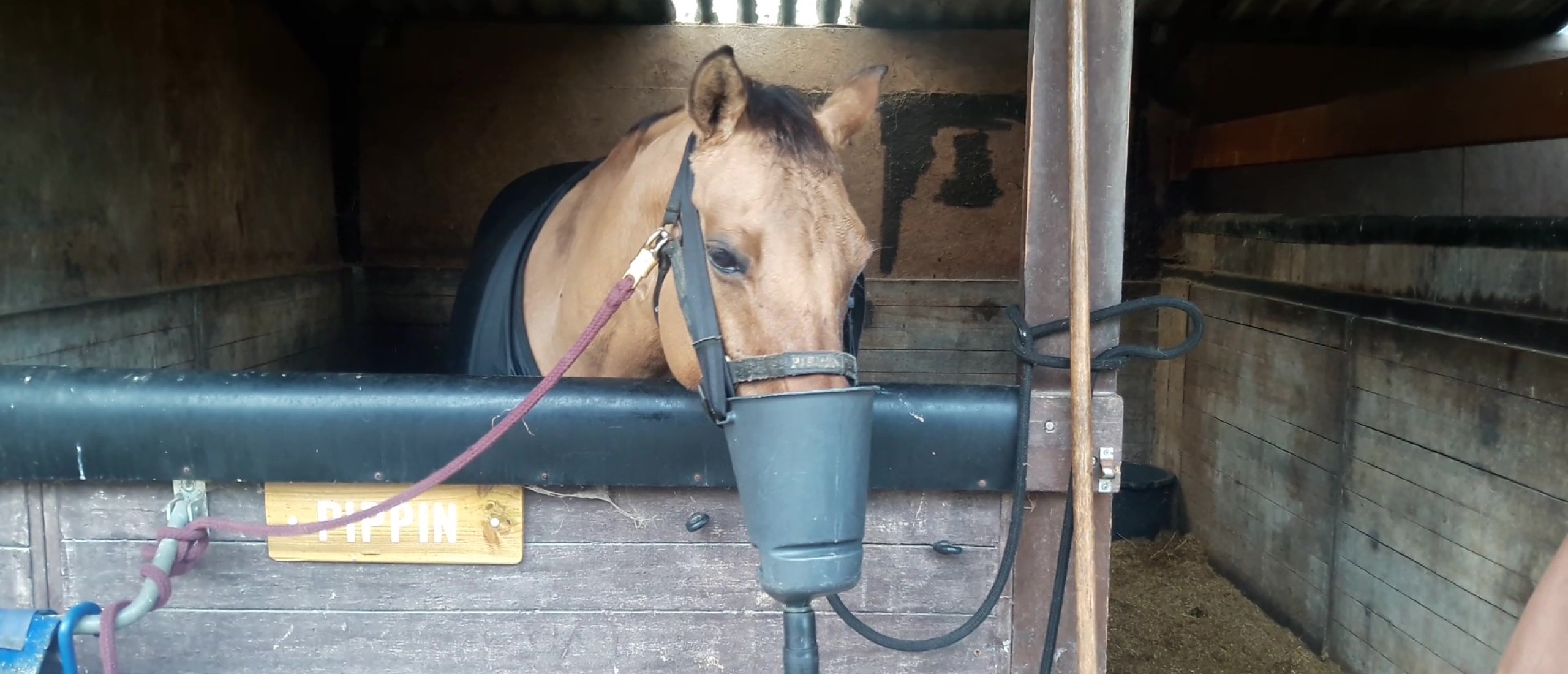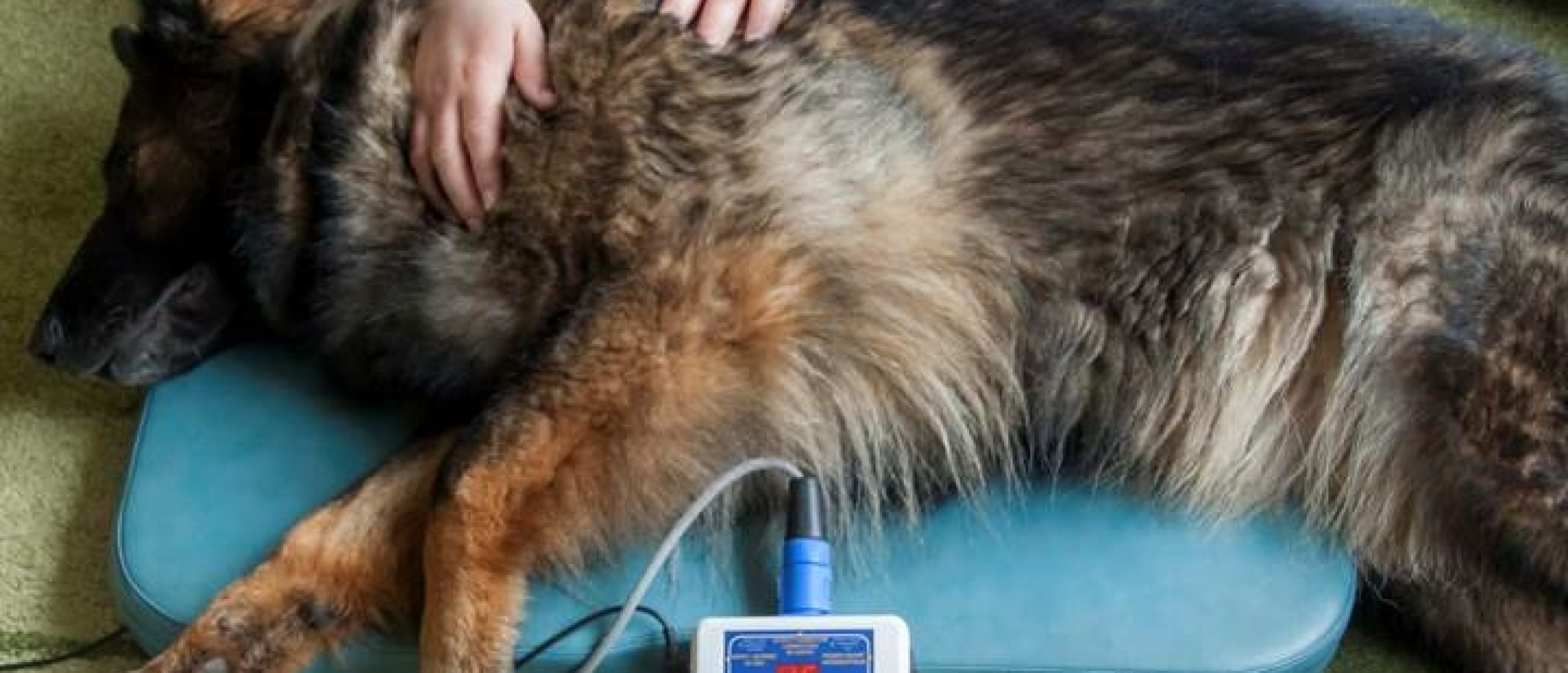FPC de Hofstede has used the 4PH for some time to investigate the possibilities of using magnetic field therapy as one of the treatment methods:
Facilitair paardencentrum de Hofstede is a company located in Leusden, fully focused on the rehabilitation of horses. Every day, two certified equine veterinarians and a number of para-veterinarians are present here to care for the patients. The company's main focus is the equine aquatrainer. This is a conveyor belt in the water. The type of aquatrainer that is used on the farm can control the speed steplessly, whereby the water level can be filled to halfway the belly of the horse. It is a very effective way to create movements that ensure that horses with back problems can become functional again. It is also ideal to be able to continue training horses with tendon injuries without strain. In addition to horses with tendon and back problems, the company also has patients with colic, wounds, or for fitness/sports coaching. Because we strive for the most optimal care, we are very happy with the 4PH. It is a widely applicable machine, which we can use for horses with painful back muscles, but also for orthopedic problems.
Pastern plate (lig. Annulare) damage
We have now treated several patients with damage to the pastern plate. Complete treatment consisted of cooling the fetlock area with back pressure, one hour of low pulsed magnetic field therapy twice daily, and a dosed rest or step regimen, depending on severity.
In some patients the lesion was chronic, and it was difficult to heal both clinically (in terms of lameness) and on the ultrasound image. Now that we use the 4PH, it is striking that the recovery seems to be going well and faster. In addition, it seems that the soreness of the area decreases, so that we need to dose less painkillers. Most patients have been declared cured on ultrasound and are now back to work at home in good health.
Bone damage
The 4PH has been used for various bone problems. One of these was a damage to the front of the pastern bone. An annoying place, as rough bone damage can irritate the tendon that runs over it at the front. Upon entering the clinic, the horse was clearly lame. X-ray showed a slight dissolution of the surface of the bone, along with new bone formation around it. This new bone formation has a rough surface when it is acute. Ultimately, these new formations are often more rounded.
We have decided to treat this horse with the 4PH along with a dosed step regimen. This patient was also followed by X-ray. After less than two weeks of treatment there was a clear improvement. The lameness was gone. The zone of bone dissolution had disappeared, and the neoplasm was slightly reduced in size and very markedly smoother and more rounded.
The horse then went home, after the recommendation to continue with the magnetic field therapy.
In addition to this specific problem, we also use the 4Hp in horses with arthritis, or fractures. We will support the use of magnetic field therapy certainly not call it some kind of miracle cure, but after the results we have achieved so far, we certainly think it is a good addition to our current treatment protocol
Laminitis
As a vet, we have a well thought-out protocol for laminitis horses. Firstly, we ensure that the possible causes of the occurrence are tackled as much as possible. This could include adjusting the diet, treating other underlying conditions, or scavenging released toxins that can be released during certain inflammations. In addition, it is important to reduce the pain as quickly as possible. We do this with the help of a very expert orthopedic farrier, giving medicines and dissipating the heat by cooling the hoof as much as possible. For the latter we use a special device with ice. If the horse can walk a short distance, we can also use our aquatrainer. In this, the horse can stand with its feet in very cold water for a while to cool down.
In addition to all these treatments, we now also use the hoofpad from magnacare. We followed a patient during the treatments by taking a thermography. A thermography is a kind of heat plate, which can very accurately measure the heat of a specific object or animal. When assessing it, we mainly look at the symmetry of the pictures (the difference between eg two front legs), the location where the hotter areas are visible (and which anatomical structures belong to this) and the relationship with the problem. In the laminitis patient, a very large hot spot was clearly visible at the front of the coronary band and a large part of the hoof. The difference was a few degrees. During the treatment you can clearly see the magnetic spirals of the main pad “light up”. You also saw the band of heat in the hoof gradually decrease, and the difference in degrees with the other hoof became smaller. Most striking was that the horse walked better to the stable every day after the treatment than on the way to the treatment! We also spent a while the first 3 times to get the horse to stand properly on the plate. After 3 times the horse did it by itself. On the basis of one patient it is of course difficult to say how well the hoofpad works in horses that are trapped. Since the result was positive with 1 animal, we would like to try this on more horses.
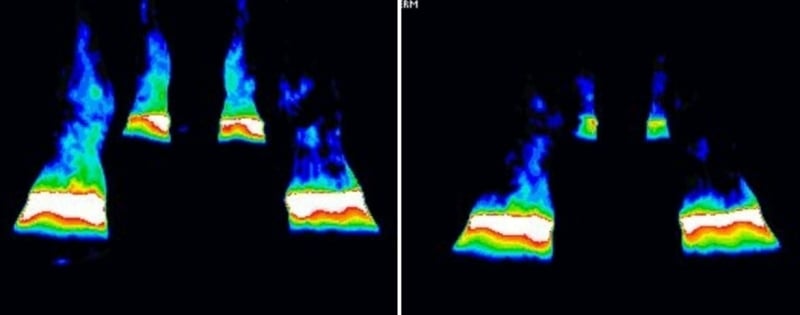
The above thermal images are before and after treatment on the hoofpad

